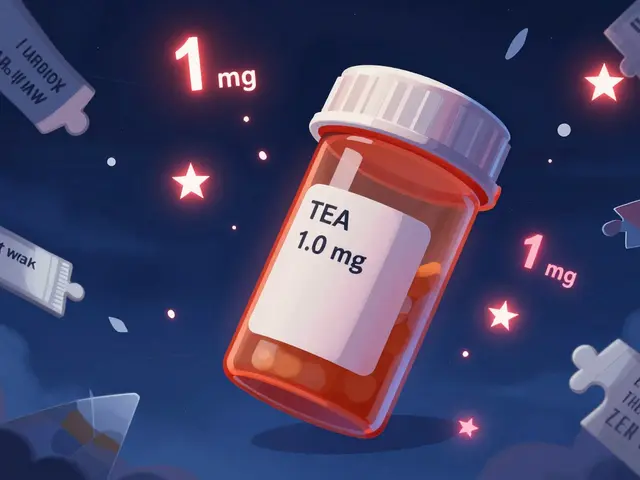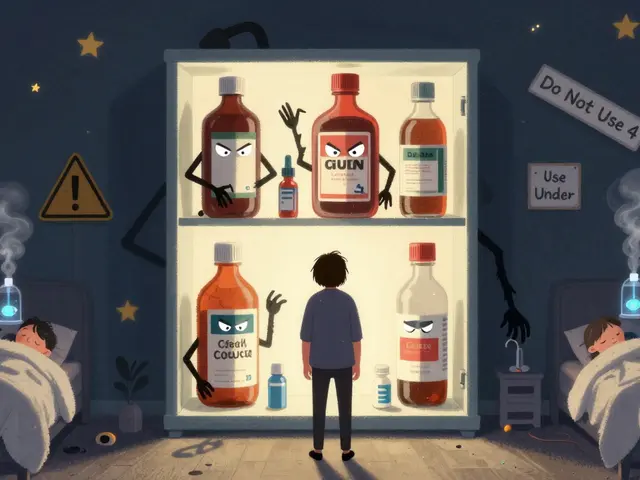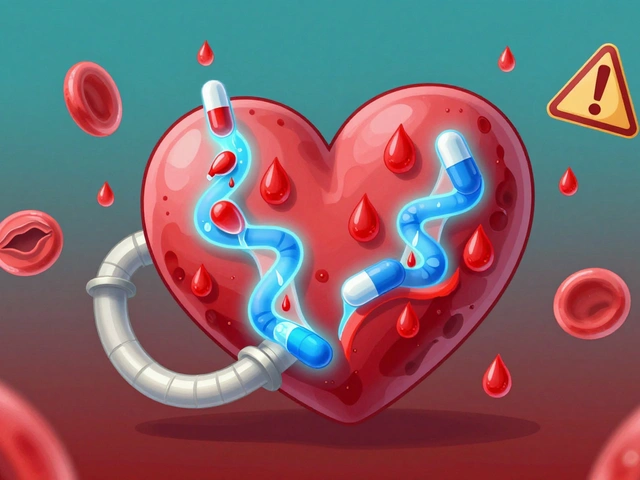
Introduction to Antidepressants and Dreams
The complex inner workings of the human mind never cease to fascinate. Dreams, those fleeting snippets of unconscious thought filled with layers of meaning, intrigue both scientists and laypeople alike. A particularly curious area of study concerns the impact of antidepressants on our dreamscapes. Research suggests that antidepressants can alter the emotional tone and vividness of our dreams, leading to both pleasant journeys and unsettling nightmares. This phenomenon raises questions about how these medicines affect our brain chemistry and subconscious mind.
Antidepressants are primarily prescribed to alleviate symptoms of depression and anxiety disorders. These medications work by altering the levels of neurotransmitters such as serotonin, norepinephrine, and dopamine - the chemicals responsible for mood regulation. While their primary aim is to balance mood and improve mental health, they also influence our sleep patterns and dreams. With millions of people worldwide relying on antidepressants, it is crucial to understand these side effects, not just for clinical purposes but also for personal well-being.
The Science Behind Dreams
Before delving into how antidepressants affect dreams, it's essential to grasp the basics of dreaming. Dreams occur primarily during the REM (Rapid Eye Movement) phase of sleep. During this phase, the brain is highly active, almost as if it's awake, causing vivid imagery and intense emotions. Dreams serve various purposes, from processing emotions to solving problems to solidifying memories. The intricate dance of neurotransmitters plays a pivotal role in these processes, making the introduction of antidepressants a wild card in the dream arena.
Antidepressants, depending on their class, interact with neurotransmitters in different ways. Selective Serotonin Reuptake Inhibitors (SSRIs), like fluoxetine or sertraline, increase the level of serotonin in the brain. Serotonin is notorious for inhibiting REM sleep, which can reduce the time spent dreaming. On the flip side, Monoamine Oxidase Inhibitors (MAOIs) increase REM density, causing more frequent and potentially more vivid dreams. This duality creates a fascinating landscape for understanding why some individuals under antidepressants report strange and exceptionally vivid dreams.
Types of Antidepressants and Their Dream Effects
Selective Serotonin Reuptake Inhibitors (SSRIs)
SSRIs are among the most commonly prescribed antidepressants. By increasing serotonin levels, these drugs have a profound impact on mood stabilization and overall well-being. However, they also suppress REM sleep, leading to alterations in dream patterns. Some users report fewer dreams initially, followed by a rebound effect where dreams become intensely vivid and emotionally charged. These dreams can be uplifting or distressing, depending on the person's mental state.
Serotonin and Norepinephrine Reuptake Inhibitors (SNRIs)
SNRIs, such as venlafaxine and duloxetine, target both serotonin and norepinephrine in the brain. Norepinephrine regulates the body's 'fight or flight' response and influences sleep patterns. SNRIs can lead to restless sleep and result in vivid, sometimes chaotic dreams. Patients might find themselves waking up frequently during the night, which disrupts the continuity of dreams and might make them more memorable.
Tricyclic Antidepressants (TCAs)
TCAs, an older class of antidepressants, like amitriptyline, affect multiple neurotransmitters simultaneously. This broad-spectrum action makes them effective but also causes a myriad of side effects, including changes in dream activity. These medications often lead to more frequent dreams, which can be pleasant or nightmarish. Given their impact on multiple neurotransmitter systems, the dream experiences can vary widely among individuals.
Monoamine Oxidase Inhibitors (MAOIs)
MAOIs, such as phenelzine and tranylcypromine, are less commonly prescribed due to their potential for severe interactions with other medications and foods. However, they have a unique place in the antidepressant landscape for their profound effects on dreams. MAOIs increase the intensity and frequency of REM sleep, leading to vivid, sometimes surreal dream experiences. Patients often report extraordinary dream recall, accompanied by intense emotions that linger upon waking.
Personal Experiences and Variability
While scientific research provides a blueprint for understanding the connection between antidepressants and dreams, personal experiences paint a richer picture. Many individuals on antidepressant therapy come forward with tales of dreams so lifelike that they blur the line between reality and imagination. Some find these dreams therapeutic, offering a release of pent-up emotions, while others find them disturbing, filled with anxiety or fear.
One must also consider the placebo effect—where belief in the side effects of a medication influences the experience of those side effects. This psychological phenomenon could account for some variability in personal reports of vivid dreams. Moreover, the dreams' content and emotional tone can be shaped by a person's mental state and life experiences, making each dream as unique as the dreamer.
The Psychological Impact
Vivid dreams induced by antidepressants can have a profound psychological impact. For some, these dreams provide an escape, a fantastical journey that contrasts with their daily struggles. For others, the intensity of these dreams can be overwhelming, adding another layer of stress to their mental health. Nightmares, in particular, can disrupt sleep, leading to fatigue and exacerbating symptoms of depression and anxiety during waking hours.
Understanding the balance between therapeutic benefits and side effects is crucial for both patients and healthcare providers. It might be necessary to adjust the dosage or switch medications to achieve a balance that minimizes negative side effects while maintaining the therapeutic benefits. Open communication between patients and healthcare providers is essential to navigate the intricate landscape of antidepressant therapy.
Managing Dream-Related Side Effects
Managing the dream-related side effects of antidepressants requires a multifaceted approach. Here are some practical tips:
- Consistent Sleep Schedule: Maintain a regular sleep schedule to help stabilize REM cycles and reduce the unpredictability of dreams.
- Relaxation Techniques: Employ relaxation techniques such as deep breathing, meditation, or yoga to calm the mind before bed and potentially lessen the intensity of dreams.
- Professional Guidance: Consult with your healthcare provider about any troubling dreams. A dosage adjustment or medication switch might be needed.
- Journaling: Keeping a dream journal can help process and understand recurring themes, offering a therapeutic outlet.
- Therapy: Cognitive-behavioral therapy can help address any underlying anxiety or trauma that might be contributing to disturbing dreams.
Conclusion: The Intricacies of Dreams and Mind
The relationship between antidepressants and dreams is as intricate as the human mind itself. While these medications play a crucial role in managing mental health conditions, they come with a set of side effects that include changes in dream activity. By understanding these effects and engaging in open dialogue with healthcare providers, patients can navigate the dreamscapes induced by their medication. Ultimately, the goal is to find a balance that fosters both mental and emotional well-being, ensuring that dreams, whether pleasant or strange, contribute positively to the overall tapestry of health.






12 Comments
The nocturnal theater of the mind, when subjected to serotonergic modulation, assumes an almost alchemical quality.
/p>The SSRIs, by attenuating the intrinsic cholinergic drive of REM, orchestrate a suppression that can be likened to dimming the lights on a stage.
Yet the brain, ever resilient, initiates a rebound phenomenon that floods the cortex with hyper‑attuned mnemonic fragments.
This resurgence manifests as dreams that are saturated with symbolic density, each imagery a potential archetype for the unconscious.
In clinical observations, patients describe scenarios where ordinary settings mutate into hyper‑real landscapes populated by anthropomorphic anxieties.
The neurochemical substrate of this metamorphosis involves not only serotonin but also downstream modulation of dopamine pathways.
Dopaminergic surge, in concert with reduced noradrenergic tone, may facilitate the vividness and emotional valence of these nocturnal narratives.
Moreover, the interplay between the limbic system and prefrontal networks during REM becomes a crucible for affective processing.
Consequently, the subjective experience of “strange” dreams can be interpreted as the brain's attempt to reconcile altered homeostasis.
From a phenomenological standpoint, the content often mirrors the patient's waking concerns, amplified by the lack of logical constraints.
This amplification is not merely a side‑effect; it can serve a therapeutic function by externalizing suppressed affect.
However, when the narrative veers into the realm of terror, the consequent sleep fragmentation may paradoxically exacerbate depressive symptomatology.
Clinicians therefore face a delicate balancing act: optimizing mood stabilization while mitigating disruptive REM alterations.
Practical strategies, such as titrating dosage or rotating to a different pharmacological class, can attenuate the intensity of the dreamscape.
Ultimately, the dialogue between pharmacodynamics and the sleeping brain underscores the intricate choreography of mind and molecule.
Look, the American way doesn't need us messing around with chemicals that turn sleep into a battlefield. The evidence is clear: these drugs hijack natural cycles and leave you scrambling at night. It's an outright assault on personal sovereignty.
/p>Hey folks, I’ve been chatting with a few friends who are on different antidepressants and the dream stories are wild. One guy said his REM turned into an epic sci‑fi saga, complete with alien debates about existential dread. Another shared that she wakes up feeling like she just ran a marathon in a lavender field. It really shows how each class can remix your subconscious in its own quirky way. So, if you’re navigating this, try keeping a dream journal – you’ll be surprised at the patterns you uncover.
/p>The phenomenon warrants careful clinical observation.
/p>Dude, the colors in these dream‑vibes are legit trippy, like a neon‑lit carnival after a TCA dose. I swear I saw a marshmallow dragon dancing on my ceiling. Gotta love how our brains can paint such wacky canvases!
/p>Yo, anyone else notice that after switching to an SNRI their nights feel like an indie movie marathon? 🎬✨ The dreams are crisp, the plot twists are insane, and I actually look forward to waking up just to write them down. Keep the vibes flowing, folks! 😎
/p>When you look at the broader philosophical picture, these altered dreamscapes act like a mirror to the self‑crafted narratives we carry awake. The heightened emotional texture can be a catalyst for insight, especially when we allow the symbols to breathe without immediate judgment. Yet, the abrupt intrusion of nightmarish scenes reminds us that the mind still guards unresolved conflicts. Embracing this duality may pave the way toward integrative healing.
/p>From a clinical and cultural perspective, it is essential to recognize the variance in REM modulation across pharmacologic classes. The literature underscores both therapeutic benefit and the potential for sleep disruption. Accordingly, a measured approach to dosage adjustment should be pursued.
/p>Totally hear you, Jamie! It’s amazing how we can turn these weird night adventures into something positive. I’ve started a little bedtime ritual – a quick meditation – and my dreams feel way more chill now. Keep sharing, it helps us all feel less alone.
/p>Ah, the genteel absurdity of pharmacology’s nocturnal side‑effects – truly a subject for the erudite. One might posit that such dream phenomena are simply the mind’s sophisticated theatre, awaiting a discerning audience. 🎭📚
/p>Remember, every vivid dream is a chance to tap into your inner drive and grow stronger. Use the imagery as fuel for your daily goals, and you’ll turn those night‑time adventures into real‑world momentum.
/p>Noted. The intensity can be managed with proper dosage oversight. 😊
/p>